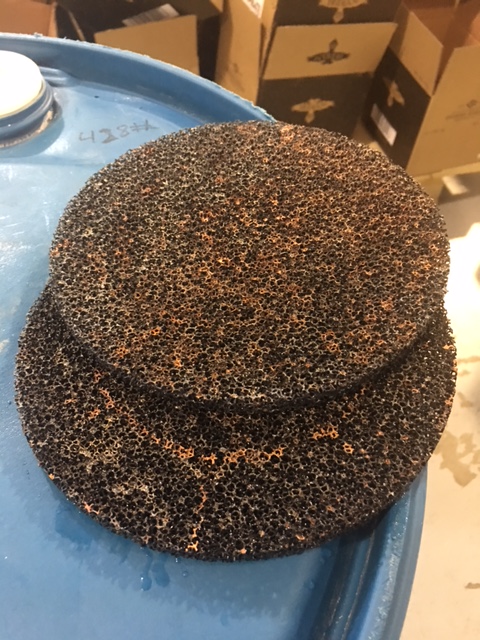Copper Catalyst Functionality!
12 May 2017
Introduction
We just did three stripping runs at the Graybeard Distillery in Durham, NC, USA. We stripped around 5,000 liters of 14% in-house made rice wine into 1,600 liters of 40% low wines. Currently? Currently we are doing the finishing run in pure mode: collecting Hearts at 192 proof.
But that's not what I want to write about today. Today is - okay, the title gave it away - about copper catalytic functionality!
The role of copper in the distillation process
Okay, I have said it before: copper is a medicine for a bad ferment. Sort out your fermentation (right pH, temperature and nutrients balance) and you don't need copper to polish up your drink. If you don't create sulfur during fermentation, you don't need to take it out during distillation.
Yeah, copper acts as a catalyst and removes sulfurs. That's its role. And with it come many problems.
Copper associated problems
Copper oxidizes and that leads to a number of problems. First of all the particle formation in the column means you get taste transfer from one run to another.
Secondly, to repair for the above, strict and aggressive cleaning of the copper column is needed. A lot of work.
Thirdly, because of the oxidation and cleaning, your column will get eaten away in 10 to 15 years. You'll need to buy a new one.
Number four: due to the oxidation, and the eating away of the column, vapor speeds change, hampering overall performance and the ability to make the same cuts consistently.
And last but not least: copper columns give copper particle contamination to your drink. A real issue. Our research has shown that if you drink "just" 0.5 liters of Scotch per day you won't die of alcoholism, but of copper poisoning. We don't find it very clever to kill the very people that buy your bottles.
iStill's solution
We have designed a special copper foam waffle that sits in the bottom of the column. It can be put in place in 5 minutes, by using the easy lifting system. And depending on the kind of run you want to do, and depending on the levels of sulfur in your ferment, you can add none, one, two, or three of these iStill Copper Waffles. They give you more catalytic conversion than a whole copper column, without all the downsides!
Your copper looks bad, Odin!
It does, doesn't it? See the picture underneath, please. But do you know why it looks so dirty? Because of its reaction with sulfur. It looks dirty because it does a dirty job. Now imagine how your copper column would look inside, if you weren't clever enough to buy the stainless steel iStill with its copper waffles! Oh, and a few hours in a bath of hydrogen peroxide and citric acid cleans those copper waffles up again real nicely.
The fact that it looks so dirty means that it is doing its job ...

www.iStill.eu
Reactions
Add your comment
All reactions ()
Loading comments..